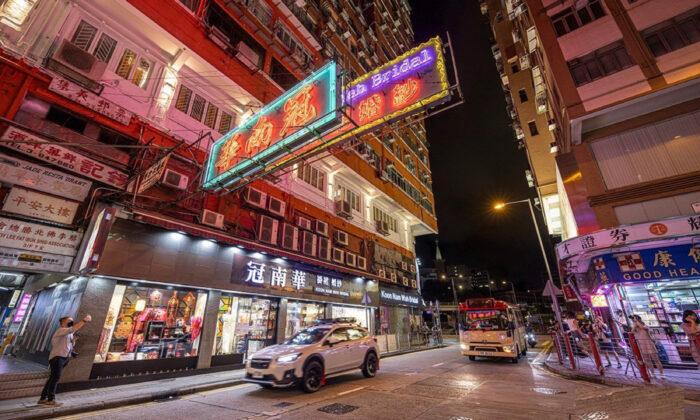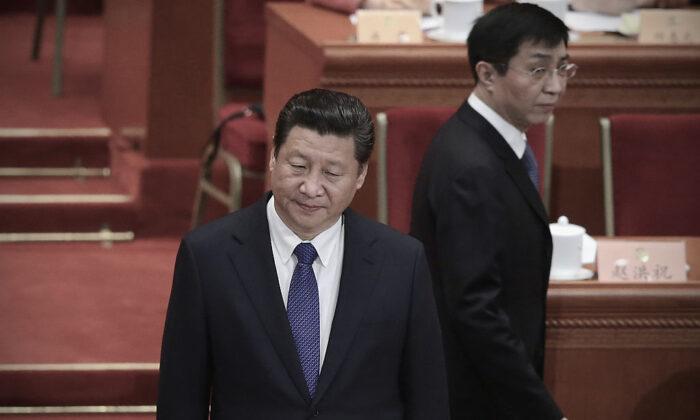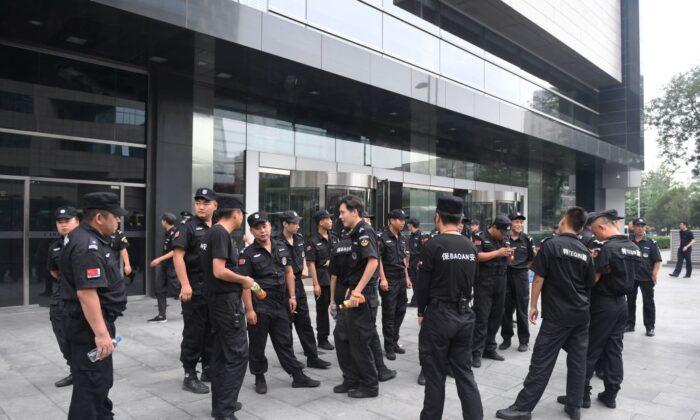A senior Chinese Communist Party (CCP) official recently admitted that because China’s manufacturing industry was limited by China’s social system, a lack of talents, and other factors, and because key technologies were controlled by “others,” China needs at least 30 years to achieve the goal of becoming a manufacturing powerhouse.
The statement was made by Miao Wei, deputy director of the Economic Committee of the Chinese People’s Political Consultative Conference (CPPCC) and former Minister of Industry and Information Technology.
The fourth level mainly consists of resource exporting countries, including OPEC (Organization of Petroleum Exporting Countries), Africa, Latin America, and other countries.
According to Miao Wei, China’s manufacturing industry is “big but not strong, comprehensive but not good,” with weak basic capabilities, while key technologies are still controlled by “others.” Because of this, it will take at least 30 years for China to become a manufacturing powerhouse.
Si Zefu, a member of the Standing Committee of the CPPCC and Chairman of the Board of Directors of Harbin Electric Corporation, also admitted on the same day that China’s manufacturing industry was “not as good as others” in three “soft strengths”: innovation capability and innovation level; product quality and brand; and management level and efficiency. “The poor profitability is particularly prominent,” he said.
Miao Wei also stressed that the manufacturing sector’s contribution to the GDP recently fell very fast. This not only dragged down China’s economic growth, but also affected urban employment. “It will also bring industrial safety risks, weakening China’s economy’s ability to resist risks and international competitiveness,” he said.
Miao Wei said that as China’s economy shifted to a service-based model, factories with polluting chimneys had been closed and manufacturing output as a share of the economy had declined. In 2020, China’s manufacturing share of GDP was just over a quarter, the lowest level since 2012.
As to the problem of China’s social system, Miao Wei believes that a “lack of market-oriented reforms” is the fundamental problem limiting the development of China’s manufacturing industry.
The CCP Seems to Have Abandoned Its Goal of Becoming a Manufacturing Power in 10 Years
In 2015, the CCP proposed the 10-year Made in China 2025 project, envisioning that by 2025, China would have transformed from a big manufacturing country to a manufacturing power, and that by 2035, the country’s manufacturing industry would surpass that of industrially advanced countries like Germany and Japan. The CCP hopes it will lead innovation in key manufacturing sectors by 2049, the 100th anniversary of the establishment of the CCP’s regime.However, after the “Made in China 2025” project became a sticking point in the trade war with the United States, Beijing has stopped talking about it publicly. The project disappeared from CCP’s 2019 government work report.
Xi Jinping Feels Chokehold in Key Technologies by the West
In addition to the trade war, the Trump administration had imposed sanctions on the CCP’s state-owned technology companies such as telecommunications giants Huawei and ZTE, and Semiconductor Manufacturing International Corporation (SMIC).As a result, the CCP has publicly admitted that China is suffering from a chokehold in the field of technology.
When hosting the CCP’s Central Economic Work Conference in November last year, Xi Jinping admitted that innovation in China’s manufacturing industry was far from enough. He said the country’s strategic science and technology forces should be strengthened to enhance China’s capability to stay independent and take control of its’ own industrial chain in order to solve the chokehold problems with key technologies.
Chinese Premier Li Keqiang also stressed at the economic work conference in December last year that “efforts should be made to solve the major problems that constrain national development and security,” and China should “focus on the weak links in the industry, implement core technology tapping projects, and solve a number of chokehold problems as soon as possible.”
Huawei Turns to ‘Smart Pig Farming’ Due to a Cut-off in Chip Supply
In recent years, China has become the world’s largest manufacturing country driven by domestic and international demand, but its industry’s dependence on U.S. high-tech products such as semiconductors has become a strategic weakness.For example, although Huawei has been backed by the CCP with full force, it was hit hard by the U.S. sanctions.
As a result, the CCP has started to promote “scientific pig farming.” Many high-tech enterprises have entered the pig farming industry.
Since the first case of African swine fever was confirmed in China in August 2018, the price of pigs has risen steadily.
Recently, when it became difficult to maintain its main cell phone business, Huawei was forced to announce its move into “smart pig farming” due to a cut-off in chip supply.
According to Sina.com, Huawei’s “smart pig farming” solution includes providing dashboard monitoring, big data analysis, and digital management.
It also supports AI identification, AI learning, AI prediction, AI decision making, robot inspection, and remote control through standardization and programming.
In addition to creating identity cards for pigs, facial recognition technology was also applied to pigs. Facial recognition of pigs, or “pig face” identification and other technologies have also been adopted in Huawei’s “smart pig farming” solutions.
An article by Radio Taiwan International mockingly says that what’s disastrous for Huawei is, even after Huawei struggled to hold on until the White House changed hands, the Biden administration hasn’t loosened the sanctions.
In February this year, Huawei’s Chairman Ren Zhengfei vowed to “survive without cell phones,” and launched the “Nanniwan” projects to save itself. The projects include making breakthroughs in various fields such as coal and steel production, music, smart screens, PC computers, and tablets.
Nanniwan was the “revolutionary base” of the CCP located near Yan'an in Shaanxi Province in China. In March 1941, the Eighth Route Army of the CCP carried out military reclamation in Nanniwan to provide supplies for the CCP.
Since then, Nanniwan has become a symbolic “sacred” place that saved the CCP. “The spirit of Nanniwan is an important part of the spirit of Yan'an,” reads Baidu.com’s entry about Nanniwan.





